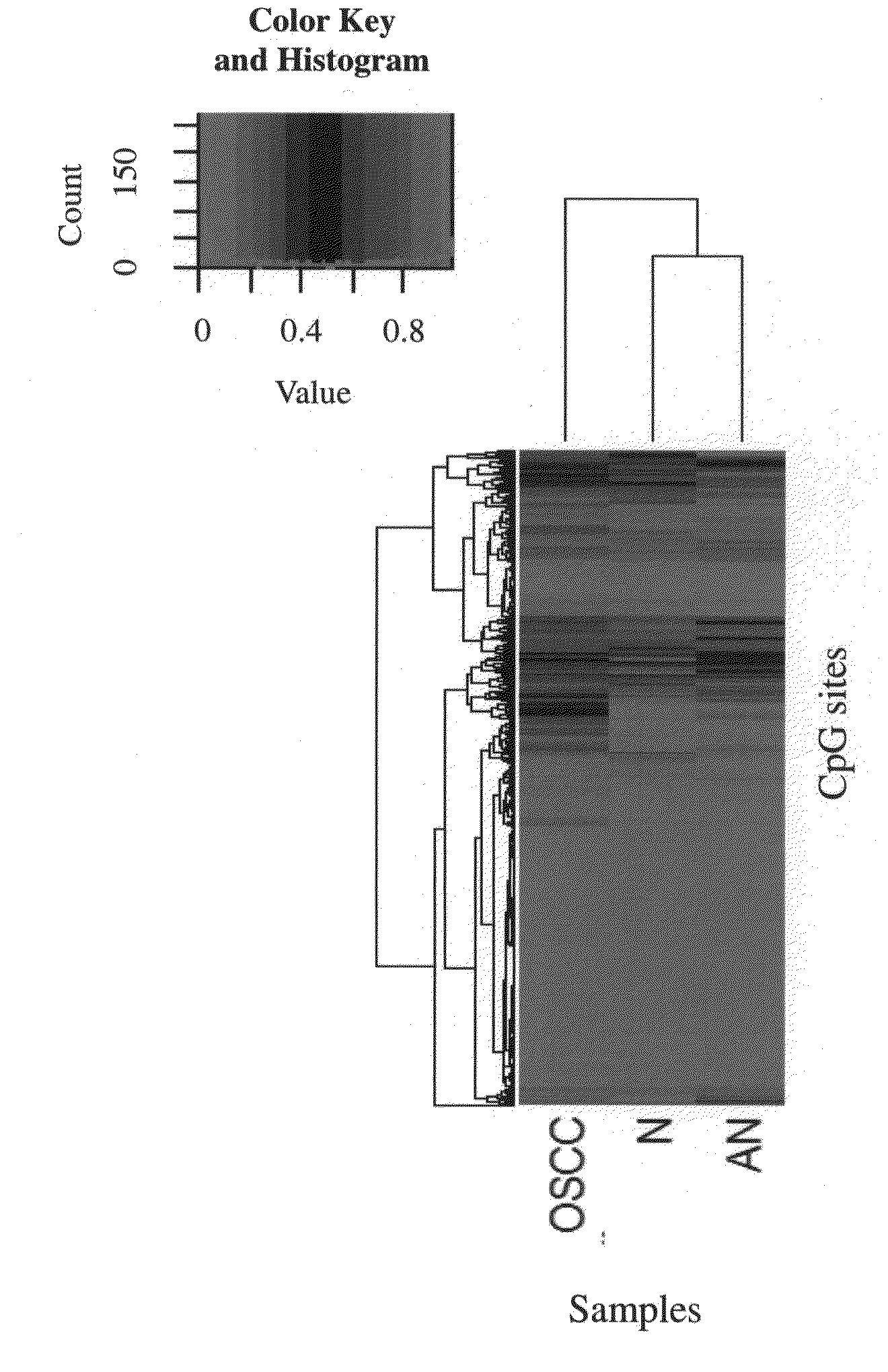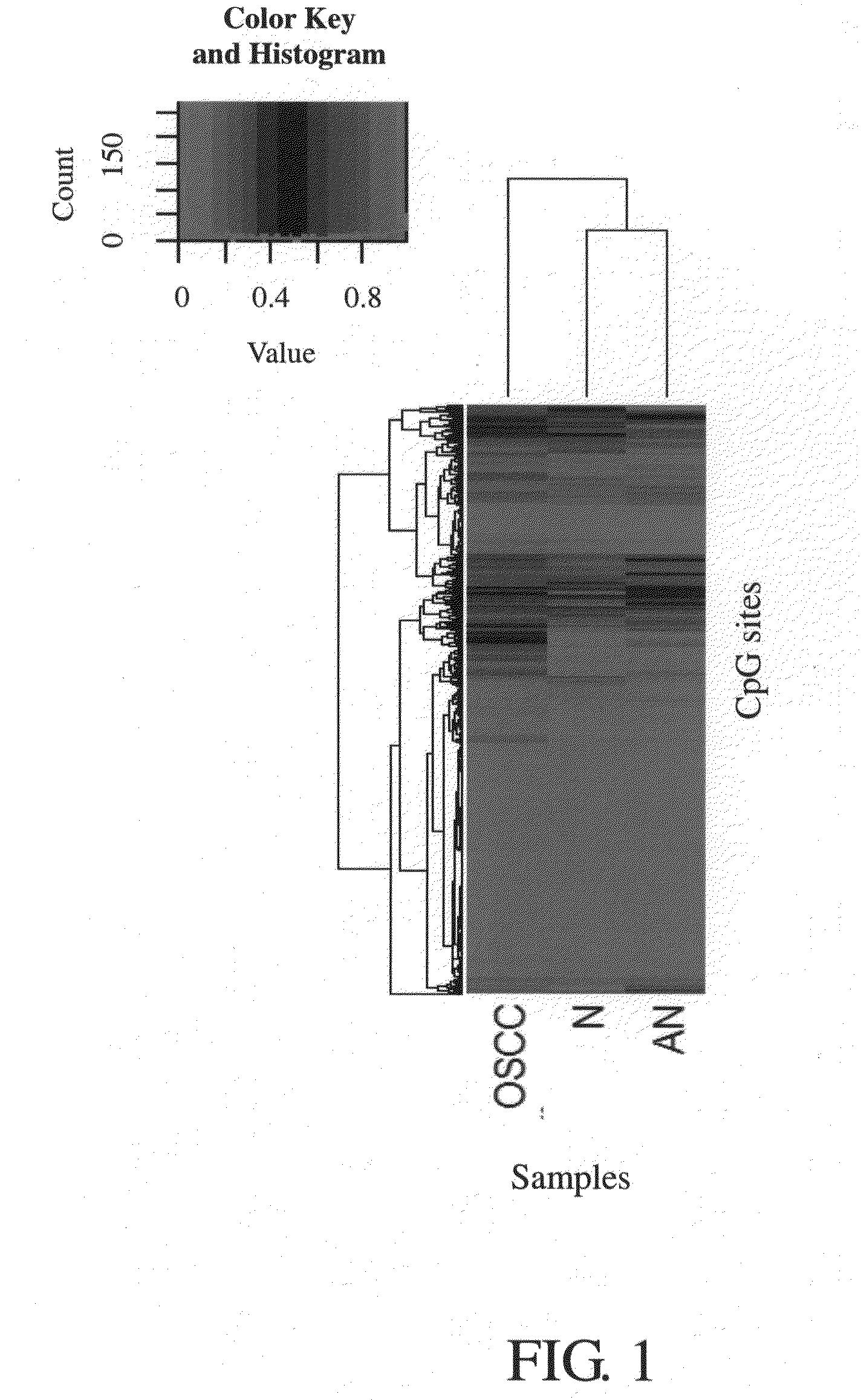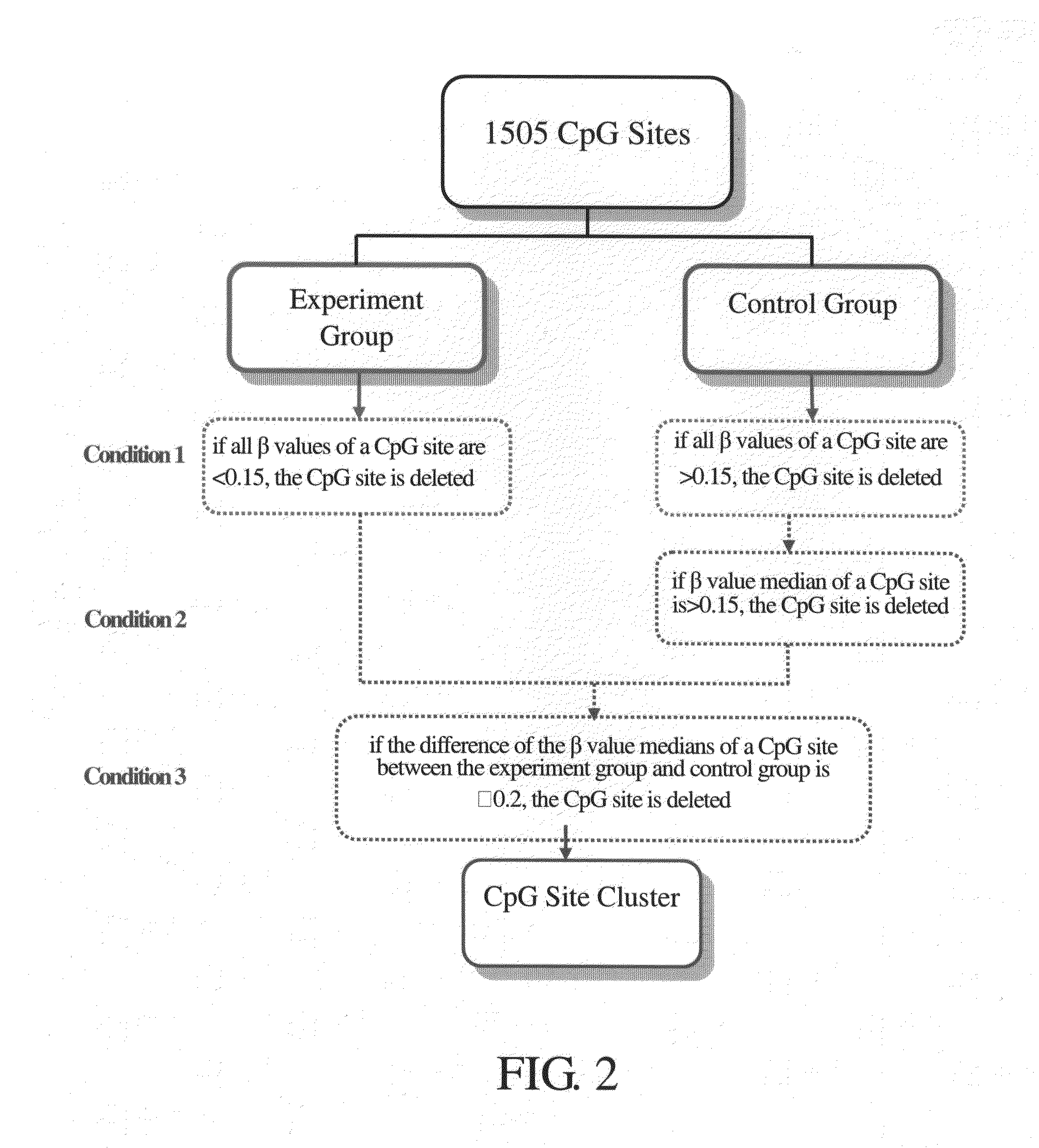Gene marker and method for detection of oral cancer
a gene marker and oral cancer technology, applied in the field of gene markers for the detection of oral cancer, can solve the problems of difficult detection via excisional biopsy, family problems and economic problems, and still a large number of patients who die with oral cancer
- Summary
- Abstract
- Description
- Claims
- Application Information
AI Technical Summary
Problems solved by technology
Method used
Image
Examples
example 1
Collecting Samples
Experiment A. Collecting Testing Samples
[0080]Samples were collected to carry out methylation analysis of gene markers, and the source of samples was from the tissue bank of China Medical University Hospital. First, oral tissues of male individuals were collected, and were classified into the experimental group (i.e., the case group) and the control group (i.e., the normal group), wherein, the experimental group was the tissue obtained by surgically resecting the tumor lesion tissue of oral cancer patients. In total, there were 40 tissue samples in the experimental group. There were a total of 15 tissue samples in the control group; 10 of which were normal tissue taken near the lesions in the oral cavities of oral cancer patients and 5 of which were normal tissue taken from the oral cavities of patients undergoing tonsillectomy.
[0081]The basic demographic characteristics of the tested male individuals are listed in Table 3. There were 40 tested male patients with ...
experiment b
on
[0083]The oral tissue samples obtained from Experiment A was used as a source of genomic DNA samples and to extract DNA. A Gentra DNA isolation kit (Minneapolis, Minn., USA) was used to extract genomic DNA, and then a Zymo EZ DNA Methylation kit (Alameda, Calif., USA) was used to conduct modification treatment by sodium bisulfite. In general, cytosine (C) would change to uracil (U) after the DNA was modified with sodium bisulfate, but if methylated cytosine (i.e., 5-methylcytosine, m5C) is treated with sodium bisulfite, then the form of this base will not be changed and still stay in the form of cytosine. Therefore, a nucleotide sequencing method can be used to identify the position of methylated cytosine in a DNA sequence.
experiment c
on of Methylation
[0084]In this experiment, an Array of Illumina GoldenGate Methylation Cancer Panel II platform (San Diego, Calif., USA) was used to analyze the methylation state, and to identify the degree of methylation of 1505 CpG sites of 807 cancer related genes in the genomic DNA obtained in Experiment B. A universal primer 1 was used as the Cy3 marker to extend a non-methylated DNA template, and a universal primer 2 was used as the Cy5 marker to extend a methylated DNA template.
[0085]Then, an algorithm of methylation analysis was used to calculate the degree of methylation of every CpG site in the genomic DNA samples, and the degree of methylation was represented as the “β value.” The β value ranged from 0 to 1, and was calculated with the following formula:
β=Max(Cy5.0) / [Max(Cy3.0)+Max(Cy5.0)+100]
wherein, “Max” referred to the maximum value of the degree of methylation of a particular CpG site in the genomic DNA sample. If there are negative values for Cy5 or Cy3 then the “ma...
PUM
| Property | Measurement | Unit |
|---|---|---|
| Fraction | aaaaa | aaaaa |
| Fraction | aaaaa | aaaaa |
| Fraction | aaaaa | aaaaa |
Abstract
Description
Claims
Application Information
 Login to View More
Login to View More - R&D
- Intellectual Property
- Life Sciences
- Materials
- Tech Scout
- Unparalleled Data Quality
- Higher Quality Content
- 60% Fewer Hallucinations
Browse by: Latest US Patents, China's latest patents, Technical Efficacy Thesaurus, Application Domain, Technology Topic, Popular Technical Reports.
© 2025 PatSnap. All rights reserved.Legal|Privacy policy|Modern Slavery Act Transparency Statement|Sitemap|About US| Contact US: help@patsnap.com



